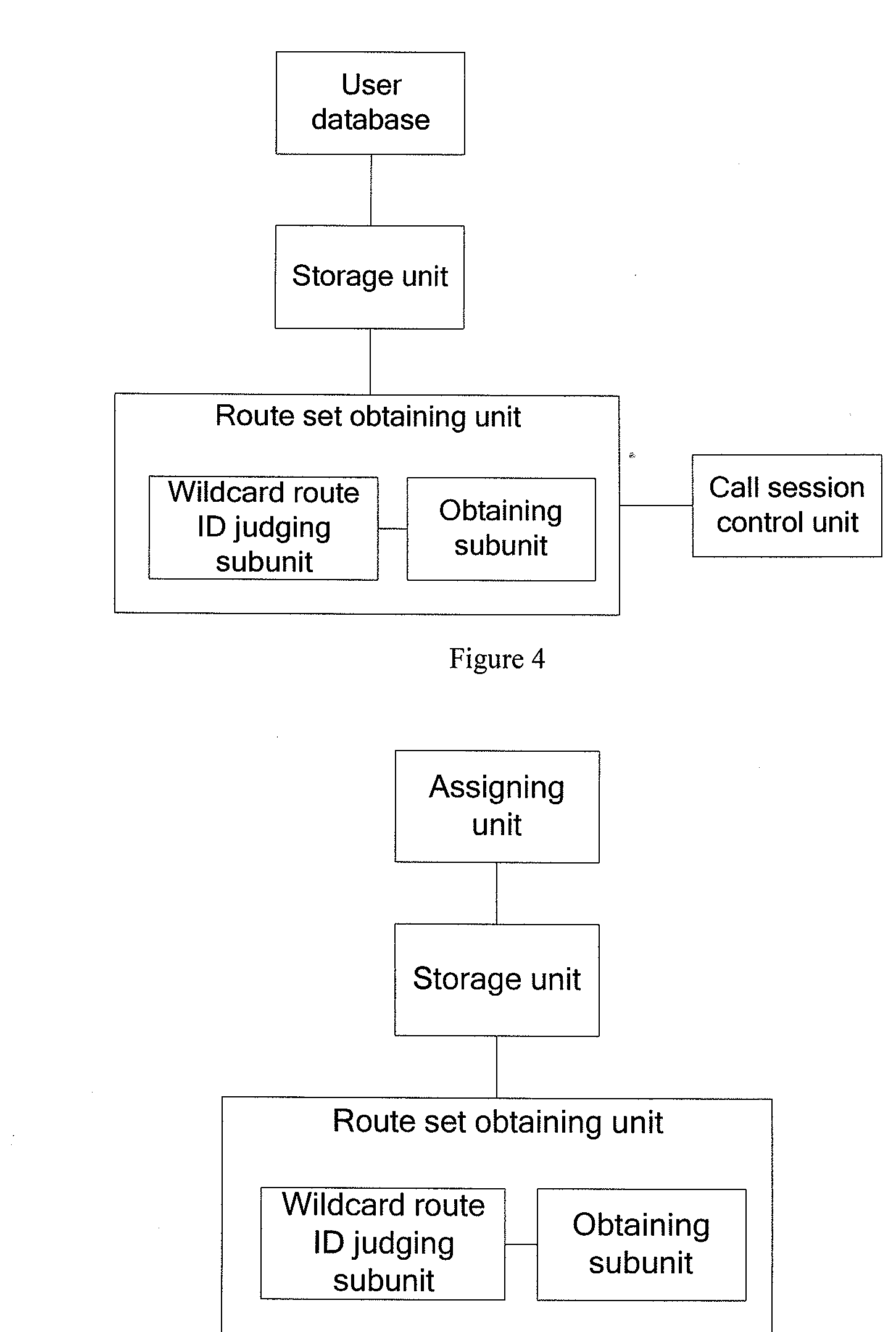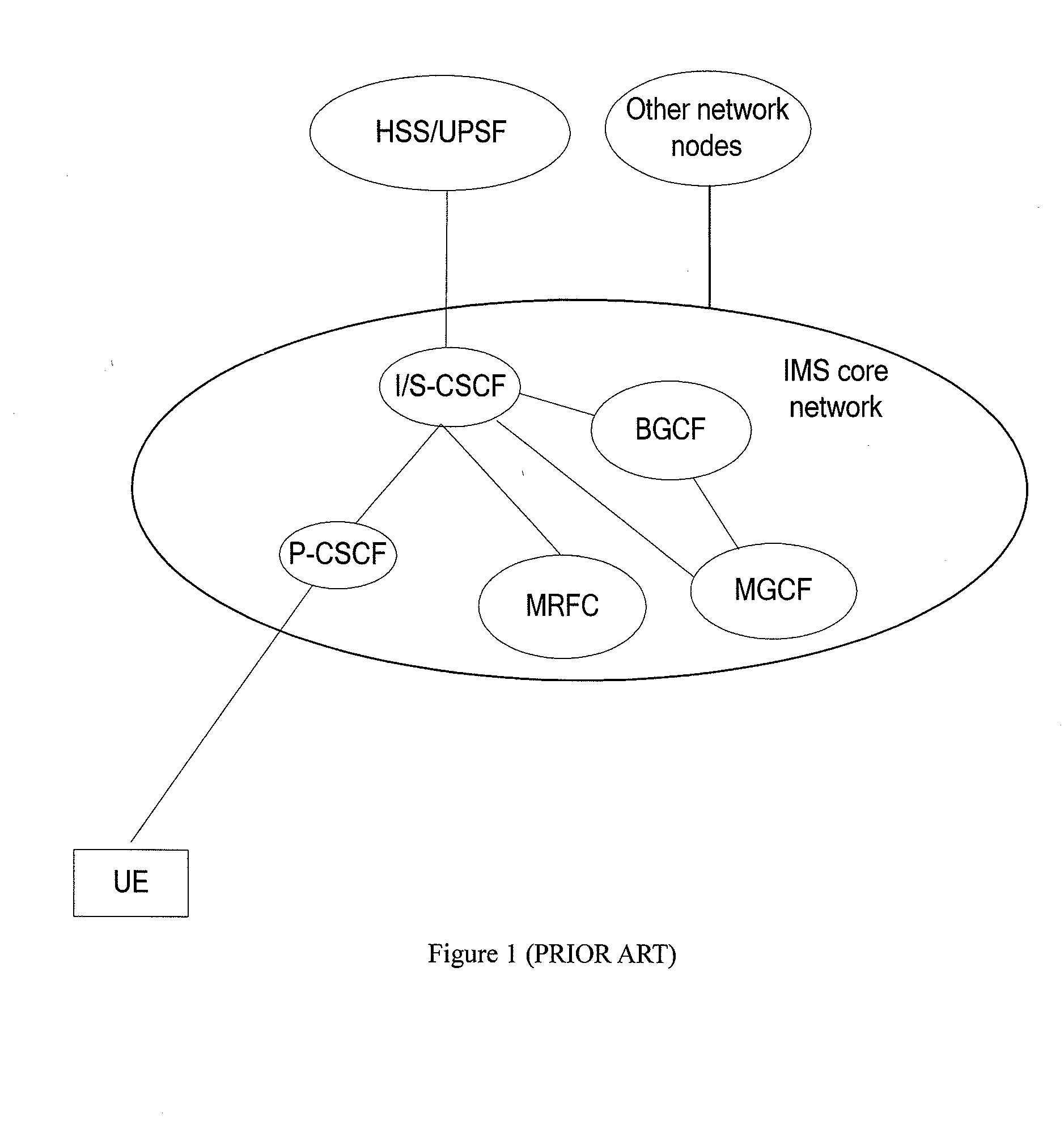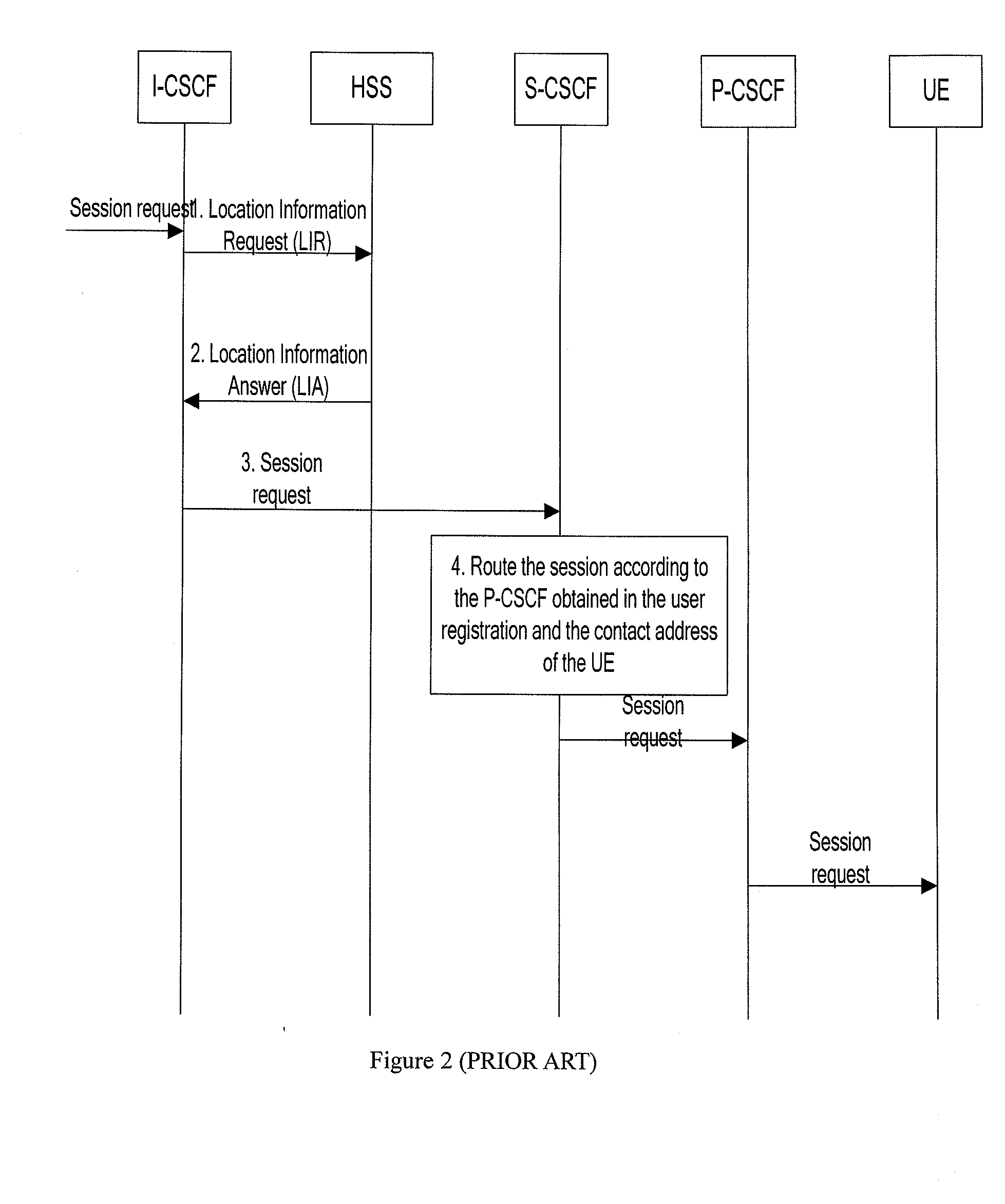Method, network and apparatus for routing sessions
- Summary
- Abstract
- Description
- Claims
- Application Information
AI Technical Summary
Benefits of technology
Problems solved by technology
Method used
Image
Examples
embodiment 1
[0068] The HSS sends routing information to the S-CSCF in the session setup process. As shown in FIG. 7, the method includes the following steps:
[0069]1. The session request is routed to the I-CSCF of the destination network.
[0070]The session request carries the called user ID: UnRegId@huawei.com, which is not registered on the IMS network currently.
[0071]2. The I-CSCF sends a Location Information Request (LIR) message to the HSS to query for the address of the S-CSCF that serves the I-CSCF, with UnRegId@huawei.com carried in the LIR.
[0072]3. After the HSS receives the LIR message, because UnRegId@huawei.com has not been registered on the HSS, the HSS judges whether the session request directed to the user meets the conditions for subsequent routing according to the wildcard route ID stored locally.
[0073]The data structure may be extended on the HSS to store the wildcard route ID. For example, the data structure of the public identification stored on the HSS may be extended. The UML...
embodiment 2
[0101] The HSS sends routing information to the S-CSCF that serves the domain user when registering the domain user ID. As shown in FIG. 9, the method includes the following steps:
[0102]1. The S-CSCF receives a Register request sent through a domain user ID.
[0103]2. The S-CSCF sends an SAR message to the HSS to register the user, with the domain user ID carried in the SAR message.
[0104]3. According to the preset information, the HSS judges whether the Register request is sent by the domain user as against the domain user ID.
[0105]For that purpose, it is necessary to extend the attribute of the public identification stored on the HSS, and add a new “identity type”, for example, add a new “destination route” type, to identify that the user ID corresponding to this public identification is a domain user. Therefore, the domain user, namely, the user that meets the wildcard route ID, can perform routing according to the route set corresponding to the domain user. A new “wildcard URI” typ...
first embodiment
[0109]Optionally, same as in step 3 in the first embodiment, the S-CSCF may obtain the wildcard route ID in the process of requesting registration of the domain user ID.
[0110]5. When receiving an initial session request such as an INVITE message, the S-CSCF judges whether the session meets the conditions as against the wildcard route ID, and if so, handles the session according to the route set corresponding to the domain user ID.
[0111]Similarly to the first embodiment, the S-CSCF checks the called user ID, such as UnRegId@huawei.com, carried in the session request; if the called user ID matches the wildcard route ID, the S-CSCF obtains the registration route path corresponding to the domain user, and uses it for routing the session request; or the S-CSCF handles the service profile, such as iFC, corresponding to the domain user ID to obtain the route address corresponding to the domain user, and uses the route address to route the session request.
[0112]After the subsequent session ...
PUM
 Login to View More
Login to View More Abstract
Description
Claims
Application Information
 Login to View More
Login to View More - R&D
- Intellectual Property
- Life Sciences
- Materials
- Tech Scout
- Unparalleled Data Quality
- Higher Quality Content
- 60% Fewer Hallucinations
Browse by: Latest US Patents, China's latest patents, Technical Efficacy Thesaurus, Application Domain, Technology Topic, Popular Technical Reports.
© 2025 PatSnap. All rights reserved.Legal|Privacy policy|Modern Slavery Act Transparency Statement|Sitemap|About US| Contact US: help@patsnap.com



